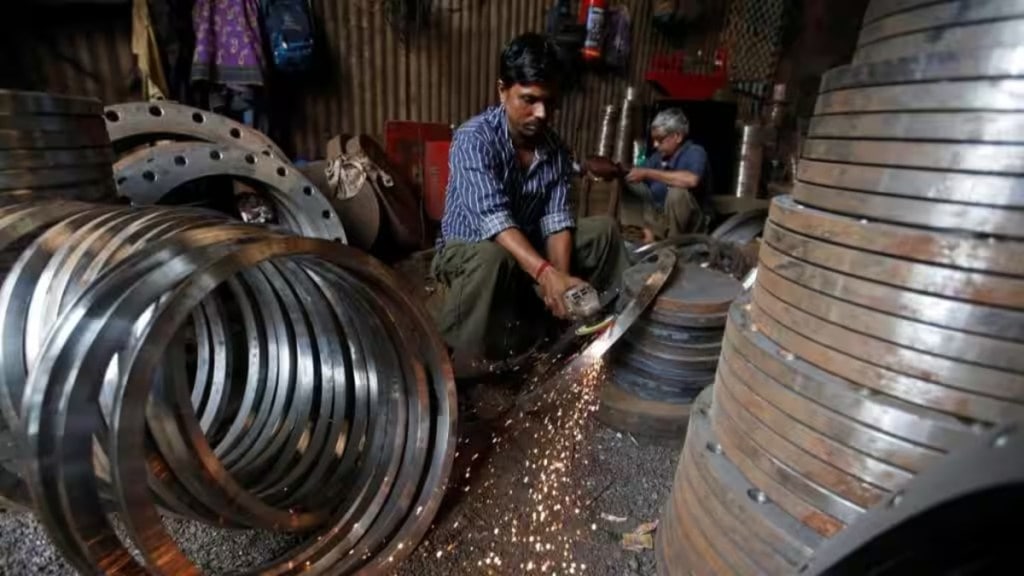India’s manufacturing Purchasing Managers’ Index (PMI) surged to a 16-year high of 59.1 in March, while remaining in the expansion zone for 33 consecutive months, S&P Global said on Tuesday, citing “buoyant” demand conditions. However, several analysts discounted the data based on surveys among stakeholders, noting that the elevated PMI for such a long period wasn’t in synchrony with output data from official agencies.
According to S&P Global, the HSBC India PMI climbed in March on the back of the “strongest increases” in output and new orders since October 2020, parallel to the second-sharpest upturn in input inventories in the history of the survey.
The PMI is an indicator which measures change in manufacturing activity across the country compared to the previous month. The indices vary between 0 and 100, with a reading above 50 indicating an overall increase compared to the previous month, and below 50 an overall decrease.
Vivek Kumar, economist, QuantEco Research, said that the core sector data released by the government doesn’t depict the “exuberance” which PMI shows. “Since PMI is just a survey and not an indicator of actual volume-data, there is variation seen between PMI and core/IIP (Index of Industrial Production),” he noted.
As per the commerce ministry, the core sector’s output declined 4.9% month-on-month in February, the steepest fall in 10 months. Manufacturing PMI print in February was 56.9, higher than 56.5 recorded in January. Both months showed a monthly rise in output, as per the PMI.
S&P Global compiles the PMI data from 400 manufacturing firms through responses it receives for its questions from the panelists.
Gaura Sen Gupta, economist, IDFC FIRST Bank, says that March manufacturing PMI continues to indicate strong growth conditions, but how much of this translates into GVA (gross value added) growth will depend on companies’ profit growth.
During March, inflows of new work strengthened from both domestic and export markets, the latter reportedly reflecting better sales to Africa, Asia, Europe and the US. New export orders increased at the fastest pace since May 2022, said S&P Global.
Growth quickened across the consumer, intermediate and investment goods sectors. Quantities of purchases increased at the quickest rate since mid-2023 and one that was among the strongest in nearly 13 years, as companies sought to build-up stocks in advance of expected improvements in sales, said S&P Global.
However, firms faced high input costs in March. “Despite remaining modest by historical standards, cost pressures were at their highest in five months,” said S&P Global. Companies reported having paid more for cotton, iron, machinery tools, plastics and steel.
A very small proportion of panelists opted to increase their selling prices in March (fewer than 5%), with customer retention efforts preventing several companies from hiking their fees. Collectively, output charge inflation softened to the weakest in over a year, said S&P Global.
March provided a mixed picture regarding the outlook for the Indian manufacturing sector. Companies remained confident on average, with 28% forecasting output growth in the year ahead and 1% expecting a contraction, S&P Global said.

